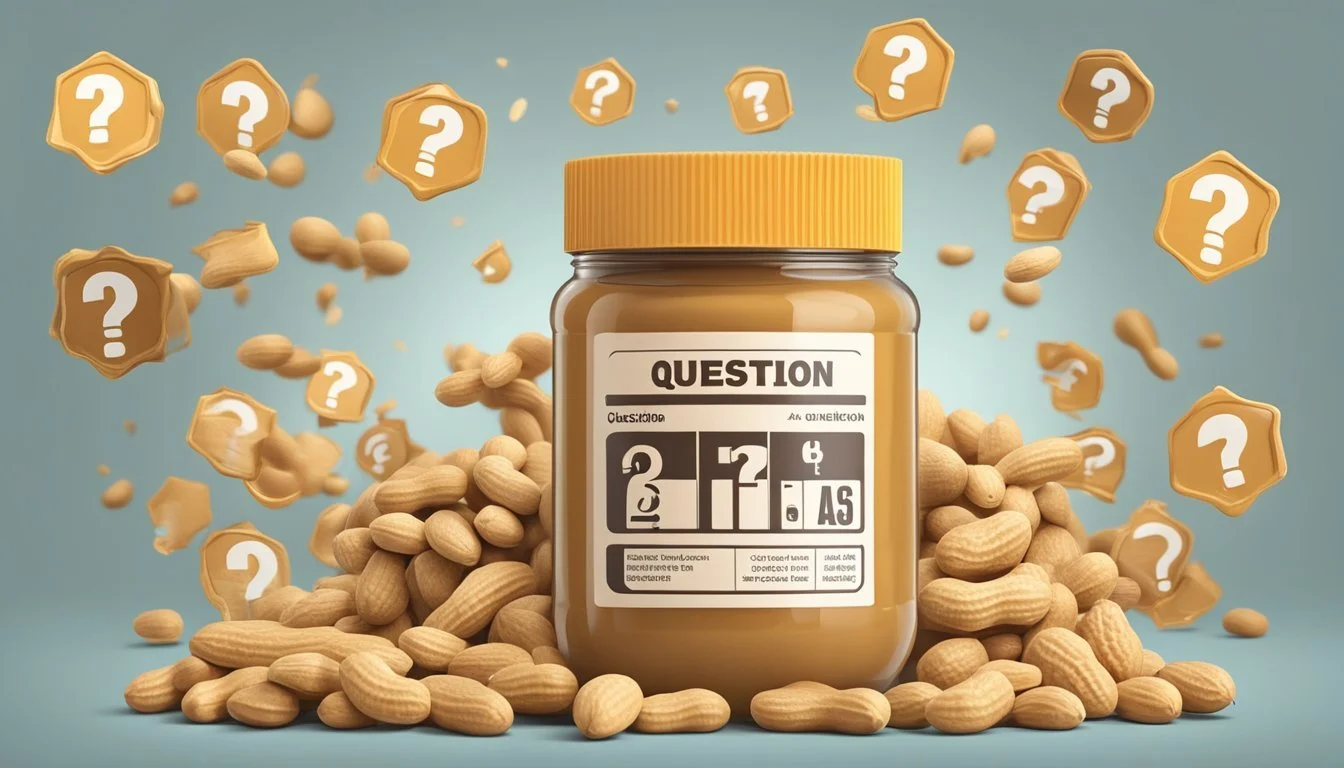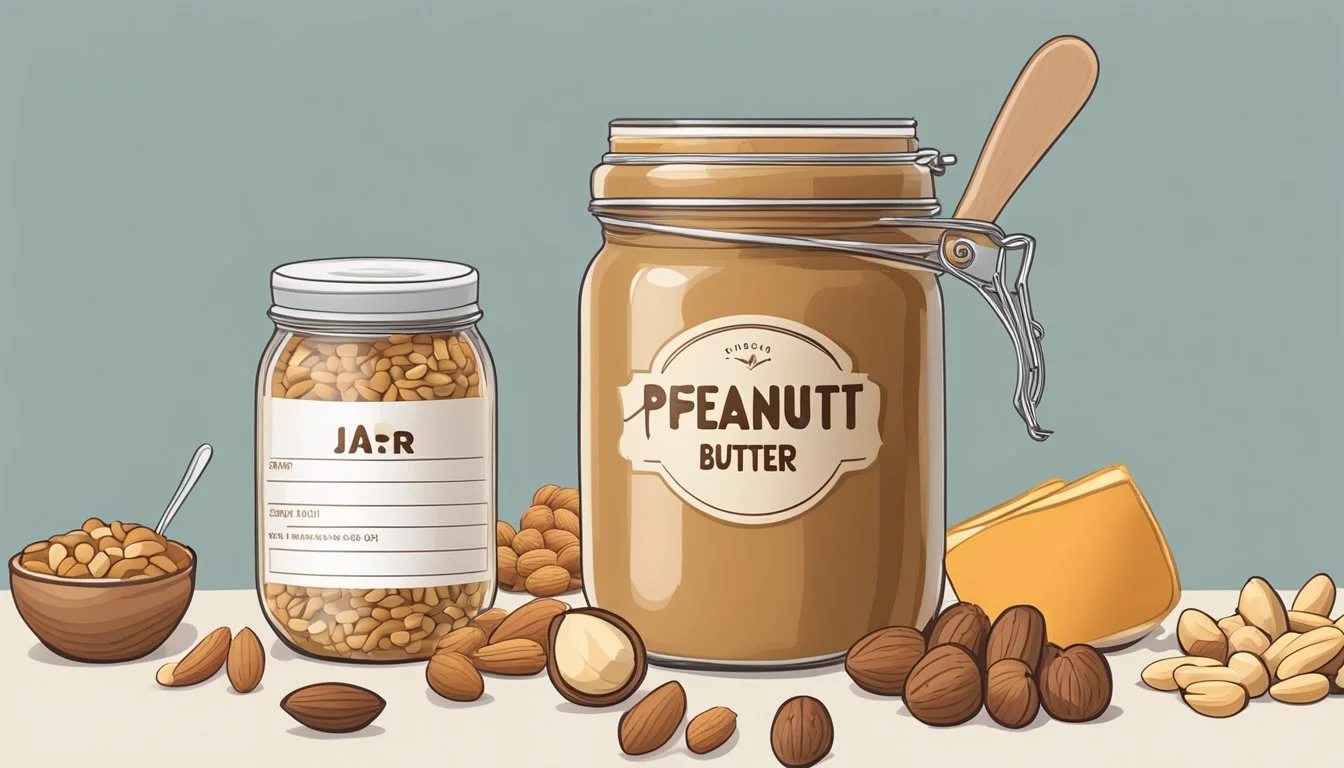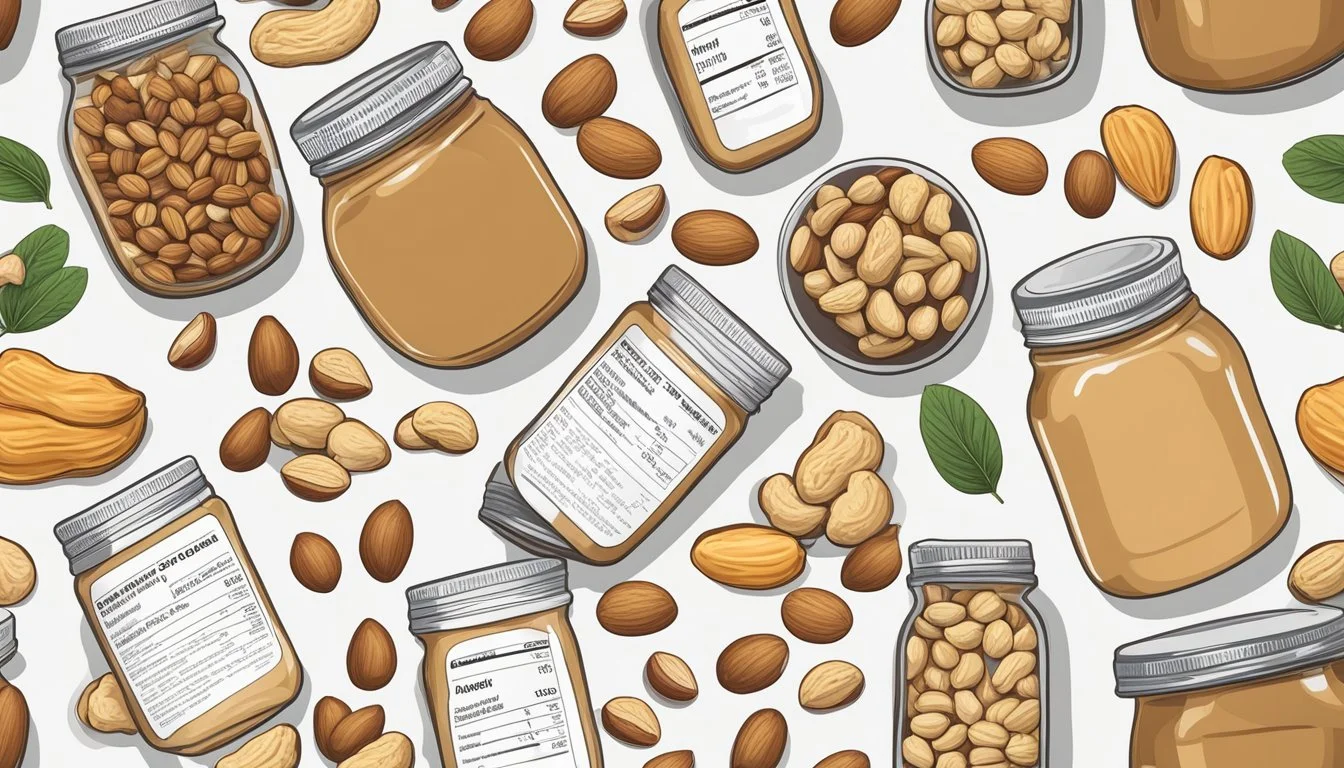Is Peanut Butter a Healthy Fat or a Calorie-Dense Indulgence?
Unveiling Nutritional Facts
Peanut butter is often recognized for its creamy texture and rich, savory flavor that appeals to many as a spread or ingredient in various cuisines. Beyond its taste, nutritionists and health experts have highlighted its health benefits, owing to its composition which primarily includes healthy fats, protein, and essential vitamins and minerals. Specifically, it contains oleic acid, a heart-healthy monounsaturated fat that has been associated with maintaining favorable cholesterol levels and supporting overall cardiovascular health.
Despite its nutritional benefits, the calorie content of peanut butter is relatively high, with a standard serving of two tablespoons providing a substantial amount of calories. This aspect of peanut butter's profile has raised questions about its role in a balanced diet, especially for individuals monitoring their caloric intake for weight management. Its healthfulness is maximized when it is consumed in moderation as part of an overall nutrient-dense diet.
The debate about whether peanut butter should be viewed predominantly as a healthy fat or a calorie-dense indulgence hinges on this balance. The high proportion of unsaturated fats to saturated fats in peanut butter is comparable to that of olive oil, a staple of heart-healthy eating. Furthermore, it supplies dietary fiber and protein, both of which are crucial for maintaining bodily functions and satiety. As a result, when peanut butter is incorporated responsibly into one's diet, it can contribute positively to health outcomes.
Composition of Peanut Butter
Peanut butter is renowned for its high concentration of essential nutrients, offering a blend of fats, proteins, and a range of vitamins and minerals.
Nutrient Profile
Peanut butter's most significant components are fats and proteins. A standard 2-tablespoon serving holds approximately 16 grams of fat and 7 grams of protein. The types of fats are primarily unsaturated fats, including monounsaturated fat which is beneficial to heart health. Peanut butter also provides a modest amount of fiber. In terms of micronutrients, it is a rich source of various vitamins and minerals, contributing to its classification as a nutrient-dense food.
Fat: Includes both saturated fat and unsaturated fats (such as monounsaturated fat)
Protein: A good plant-based protein source
Fiber: Supports digestive health
Vitamins: Abundant in vitamin E, niacin (B3), other B vitamins, and folate
Minerals: Contains magnesium, zinc, iron, potassium, copper, and phosphorus
Comparison to Other Nut Butters
Compared to other nut butters, peanut butter offers a similar nutrient profile with a few distinctions. Peanut butter is particularly rich in protein, which makes it standout among its counterparts. It also has a notable content of resveratrol, an antioxidant not typically found in other nut butters. However, other nut butters may offer benefits such as higher levels of omega-3 fatty acids or different profiles of vitamins and minerals. For instance, almond butter typically contains more vitamin E and magnesium compared to peanut butter.
Protein: Peanut butter usually has more protein than other nut butters.
Antioxidants: Unique presence of resveratrol in peanuts.
Omega-3 Fatty Acids: Generally lower in peanut butter compared to other options like walnut butter.
Vitamin and Mineral Content: Varies among different types of nut butters; some might have higher or lower amounts of specific nutrients compared to peanut butter.
Health Benefits
Peanut butter offers a range of health benefits, thanks in part to its content of healthy fats and nutrients that support heart health, muscle building, and blood sugar regulation.
Role in Heart Health
Peanut butter is a source of oleic acid, a type of monounsaturated fat associated with maintaining good cholesterol levels. This heart-healthy fat can replace less healthy fats in the diet, potentially reducing the risk of heart disease. Additionally, it provides potassium, which contributes to normal heart function and maintains blood pressure.
Muscle Building and Repair
As a plant-based source of protein, peanut butter contributes to muscle building and repair. Each 2-tablespoon serving contains approximately 7 grams of protein, which is crucial for the healthy development and maintenance of muscles, cartilage, bones, and skin.
Control of Blood Sugar
The inclusion of peanut butter in the diet may aid in controlling blood sugar levels. This effect is beneficial not only for individuals looking to manage their energy levels but also for those with diabetes. The healthy fats in peanut butter have a minimal impact on glucose levels, making it a smart addition to a diabetic-friendly diet.
Concerns and Risks
When considering the role of peanut butter in a diet, it is crucial to be aware of its high calorie and fat content, potential additives, and the risk of allergies. The impact on weight management and the presence of ingredients that may affect health merit careful scrutiny.
Caloric Density and Weight
Peanut butter is calorie-dense, with approximately 597 calories per 3.5 ounces (100 grams). For individuals tracking their caloric intake for weight loss or maintenance, portion control is essential. Overconsumption of peanut butter can lead to weight gain. Despite this, the presence of unsaturated fats in peanut butter can be beneficial for satiety and may support weight control when consumed in moderation.
Presence of Additives
Commercial peanut butter may contain various additives, such as sugar, salt (sodium), and preservatives, to enhance flavor and extend shelf life. These can increase the product's glycemic index and add unnecessary calories to the diet. Some peanut butter brands use hydrogenated oils or trans fats to prevent oil separation, which can contribute to negative health effects, including an increased risk of heart disease.
Allergies and Sensitivities
Peanut butter can pose serious health risks for individuals with peanut allergies, potentially leading to life-threatening reactions. Furthermore, the high fat content may affect those with sensitivities, influencing blood pressure and exacerbating certain health conditions. Consumers with a history of allergies should carefully read labels to identify possible cross-contaminants and opt for brands that cater to allergen-free diets.
Types and Varieties
When exploring the range of peanut butter products available on the market, consumers should be aware that the key differences lie in the processing and added ingredients, as well as in the texture and taste preferences they cater to.
Natural versus Commercial Peanut Butter
Natural peanut butter typically consists of peanuts and sometimes a small amount of salt, retaining most of the nut's original nutrients. Without additional oils, it often separates, with the oil rising to the top, and may require stirring before use. Commercial peanut butter, on the other hand, may include additives such as sugars, oils, and fats to improve shelf-stability and flavor. These components can alter the nutritional profile, increasing calorie content and potentially impacting healthfulness.
Texture and Flavor Variants
Texture is a defining characteristic of peanut butter, broadly categorized into creamy and crunchy. Creamy peanut butter provides a smooth, uniformly textured spread, while crunchy peanut butter contains bits of peanuts for added texture. Beyond these traditional types, flavored variants encompass a range of additional tastes, such as honey or chocolate, often achieved by incorporating sweeteners and artificial flavors.
Health-conscious consumers may opt for organic peanut butter, which avoids the use of pesticides and synthetic fertilizers and adheres to organic farming standards. However, individuals allergic to tree nuts should exercise caution as cross-contamination could occur during manufacturing.
Culinary Uses and Pairings
Peanut butter is a versatile ingredient that enhances the flavor and nutritional value of various foods, making it a staple in kitchens. It is not just a spread but a component that pairs well with both sweet and savory partners, contributing to the taste and texture of a dish while offering proteins, healthy fats, and fiber.
Breakfast Options
For a quick and nourishing start to the day, peanut butter can be spread on toast or stirred into oatmeal. It adds a creamy texture and a satisfying nutty flavor to morning routines, while the fiber and protein content help to regulate appetite and provide sustained energy.
Toast: Try whole-grain bread topped with peanut butter and slices of banana or a drizzle of honey for added sweetness.
Oatmeal: Swirl peanut butter into hot oatmeal, and finish with a sprinkle of cinnamon or a handful of nuts for extra crunch.
Creative Snacking
Peanut butter's rich flavor and filling qualities make it perfect for snacks that satisfy hunger between meals.
Celery Sticks: Fill sticks of celery with peanut butter for a crunchy and creamy snack, balancing the low-calorie vegetable with a more calorie-dense spread.
Yogurt Dip: Create a dip for fruit or carrots by mixing peanut butter with Greek yogurt to cut down on the calories while keeping the taste and appetite appeal.
Cooking and Baking
Beyond spreading, peanut butter works as a butter alternative in various recipes, adding a distinctive flavor to both sweet and savory dishes.
Sauces and Marinades: Peanut butter can thicken sauces and marinades, infusing dishes with a unique, savory taste.
Baked Goods: In recipes for cookies and cakes, peanut butter adds moisture, flavor, and a rich texture. Always use it in moderation to balance the carbohydrates and caloric intake.
Purchasing and Storage
When choosing peanut butter, consumers should look for products that align with their health goals and understand proper storage to maintain freshness and quality.
Selecting the Right Product
Consumers should read labels carefully to compare nutrients and ingredients. A healthy peanut butter should ideally contain a short list of ingredients, usually just peanuts and possibly a small amount of salt. Options with no added sugars or hydrogenated oils are better for heart health. Some peanut butters include added flavor enhancers or ingredients designed to improve their nutritional profile, like extra protein or fiber which can be beneficial for those looking to lose weight or enhance their overall nutrient intake.
When purchasing peanut butter at the grocery store, especially in America, buyers are presented with a variety of choices from natural to processed. The healthiest option typically has:
Peanuts (as the main and often the only ingredient)
Minimal or no added sugars
No hydrogenated fats
A higher ratio of unsaturated fats to saturated fats
Longevity and Preservation
Peanut butter has a relatively long shelf life when stored properly. Unopened jars of peanut butter can stay fresh for months when kept in a cool, dry place, away from direct sunlight. Once opened, a jar of peanut butter should be stored in the refrigerator if it's a natural variety with no added hydrogenated oils to prevent oil separation and spoilage. Processed peanut butters with stabilizers have a longer shelf life and can often remain in the pantry; however, refrigeration may still help to prolong their freshness.
Recommendations and Moderation
Peanut butter can be a nutritious addition to one's diet, offering healthy fats and valuable nutrients, but it is also calorie-dense. It is important to consume it in moderation to maximize health benefits without contributing to weight gain.
Incorporating Peanut Butter in a Healthy Diet
Peanut butter is rich in healthy fats, predominantly monounsaturated and polyunsaturated fats, which are beneficial for heart health. "Ground peanuts," the primary ingredient in traditional peanut butter, contribute to its nutrition, offering protein, fiber, and minerals like magnesium. When choosing peanut butter for its health benefits, one should opt for products that contain mostly peanuts, with few or no added sugars or oils. The taste of peanut butter is appealing to many, making it a practical choice for enhancing the flavor of nutrient-rich meals.
Peanut Butter Nutrition Facts (approximate per 2 tablespoons):
Calories: 190
Protein: 7 grams
Fat: 16 grams (healthy fats)
Carbohydrates: 7 grams
Fiber: 1.6 grams
Sugar: varies (lower is healthier)
Serving Suggestions:
With whole-grain toast for a balanced breakfast
As a dip for apple slices or celery sticks for a fiber-rich snack
Quantity and Frequency of Consumption
Moderation is key when incorporating peanut butter into a diet, especially for individuals concerned with weight loss or preventing weight gain. One serving, typically two tablespoons, is sufficient for most adults. This portion contains enough healthy fats and nutrition to contribute to satiety without excessive calories. People looking to lose weight should be particularly mindful of their consumption frequency, aiming to enjoy peanut butter in moderate quantities no more than once a day. Regular, controlled intake aligns with a balanced diet and supports maintaining a healthy weight.
Resources and References
The nutritional profile of peanut butter has been discussed across various authoritative sources. These references provide factual and health-related information:
USDA National Nutrient Database
The USDA provides comprehensive nutrient profiles for various foods, including peanut butter. Readers can access detailed information about calorie content, macronutrient distribution, and mineral content.Verywell Fit
Offers insights into the calorie and macronutrient specifics of peanut butter, emphasizing the presence of healthy fats, folate, potassium, vitamin E, and B vitamins within a standard serving.WebMD
Highlights the cardiovascular benefits linked to the main fats found in peanut butter, such as oleic acid. This source also discusses the role of mono-unsaturated fats in maintaining healthy cholesterol levels.Healthline
Presents evidence on peanut butter's health impacts, focusing on its high-fat content. It outlines the caloric density and advocates moderation in consumption.Verywell Health
Supports the inclusion of peanut butter in a balanced diet, stressing its protein content and benefits for muscles, cartilage, bones, skin, and blood.Academic Journals
Peer-reviewed studies found in journals such as The American Journal of Clinical Nutrition provide empirically supported assessments on the long-term health effects of peanut butter consumption.
Readers seeking to comprehend the health implications of incorporating peanut butter into their diet should consult these sources for a well-rounded view.









